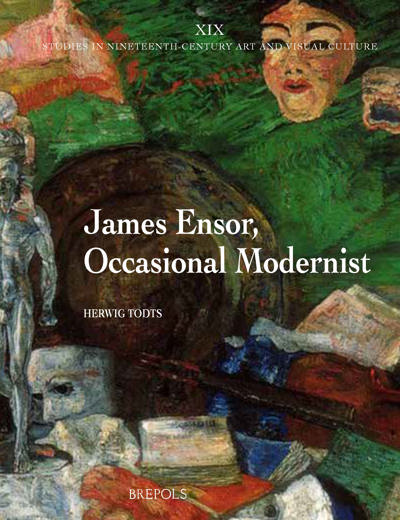
Disrupting Schools
Transnational Art Education in the 19th Century
France Nerlich, Eleonora Vratskidou (eds)
- Pages: 232 p.
- Size:216 x 280 mm
- Illustrations:24 b/w, 31 col.
- Language(s):English
- Publication Year:2022
- € 115,00 EXCL. VAT RETAIL PRICE
- ISBN: 978-2-503-57031-0
- Hardback
- Available
“While the co-editors’ introduction highlights the different terminologies and approaches used by the contributors, Disrupting Schools is a remarkably coherent volume, each essay’s contribution to the project clearly articulated. (…) Overall, the wideranging examples of cultural transfer of artistic resources and technical skills through different forms of mobility offer invigorating models for vibrant new transnational histories of nineteenth-century art and education.” (Alison Syme, dans Revue d’histoire de l’education, 461, 2023)
France Nerlich is Professor at the University in Tours. She has dedicated her work to the question of reception and artistic transfer in the 19th century. Eleonora Vratskidou is Visiting Professor at the Technische Universität Berlin and works on the transnational history of art academies in the 19th century.
The category of the “national school”, paramount for the emerging discipline of art history in the 19th century, tended to dismiss the crucial encounters, confrontations and exchanges prompted by the fact that artists commonly travelled abroad, especially for the purposes of education and training. The aim of this volume is to address the complexities of this under-researched phenomenon, shedding light on the motivations and impact of transnational art education on artists’ careers, on the actors and educational institutions involved (e.g. state-run academies, private schools or studios, museums, outdoor practices) and on the growing international networks connecting artists, patrons, collectors, dealers, critics and scholars. Even though the nation was a major category for historical actors of the period, it is essential to question the validity of the national framework as an analytical tool for current scholarship: our aim is therefore to propose a new reading of 19th-century art worlds based on the idea of circulations, entanglements and revised geographies.
In the 19th century the destinations and itineraries of art students were reshaped by changing artistic trends and reputations, as well as by larger economic and geopolitical transformations engendered by the formation of new nation states and the remapping of Empires. The more or less temporary expatriations and the experience of difference during the key-period of artistic training generated divergent individual responses to foreign artistic contexts. Their responses were formed amidst persistent tensions between the elaboration of “national art” and the appeal to artistic values that crossed national boundaries. Examining both recurring patterns as well as individual examples, the contributors to the volume analyze career strategies that took advantage of resources labeled as “foreign” and explore the implications of an increasingly internationalized art market for the choices of aspiring artists. Beyond the emphasis on the circulation of people/actors, specific attention is given to the transfers of teaching methods, techniques and art theoretical discourses between artistic centers. Contributions also take into consideration the more or less precarious living conditions of art students abroad, their modes of socialization and group formations, the experience of the city and participation in artistic and intellectual circles.
Introduction
France Nerlich and Eleonora Vratskidou, Transnational Art Education, or How to Rethink the History of Nineteenth-Century Art
Sharing Knowledge, Testing Methods
Susanne Müller-Bechtel, Academic Life Drawing in Rome in the Second Half of the Eighteenth Century: Shaping a Common Language
Claudia Denk, Traduttore, The German Edition of Pierre-Henri de Valenciennes’ Treatise for Travelling Landscape Painters
Stéphanie Baumewerd, A German Spin-Off of French Studio Practice: Karl Wilhelm Wach and the ‘New’ Berlin School of Painting
Arnika Groenewald-Schmidt, Nino Costa’s Transnational Training in the Roman Campagna
Diffracted Paris
Foteini Vlachou, Moving While Sitting Still? Columbano Bordalo Pinheiro Anticipating Paris in Lisbon
Gitta Ho, Caroline Pockels’s ‘Peaceful Campagne in Paris’: A Braunschweig Portrait Artist in the French Capital, or The Merits of the Ordinary
Galina Mardilovich, What Russian Printmakers Found in Paris
Davy Depelchin, Inheriting Networks: Three Generations of Belgian Artists Abroad
Mayken Jonkman, Planting Seeds in Paris: Foreign Pupils as Investment; The Art Dealer Adolphe Goupil and the Dutch Painter Frederik Hendrik Kaemmerer
Being Here and Elsewhere
Elena Chestnova, Gottfried Semper: Teaching and Writing on the Move
Fábio D’Almeida, A Brazilian Defence of the Reform of the École des Beaux-Arts in Paris (1863): Pedro Américo’s Manifesto
Pamela A. Ivinski, An American (Not Only) in Paris: The Continental Training of Mary Cassatt, 1866–74
Emily C. Burns, National or Cosmopolitan? Cultural Politics and Artists’ Clubs in Paris, 1890–1910
Bibliography
Index




